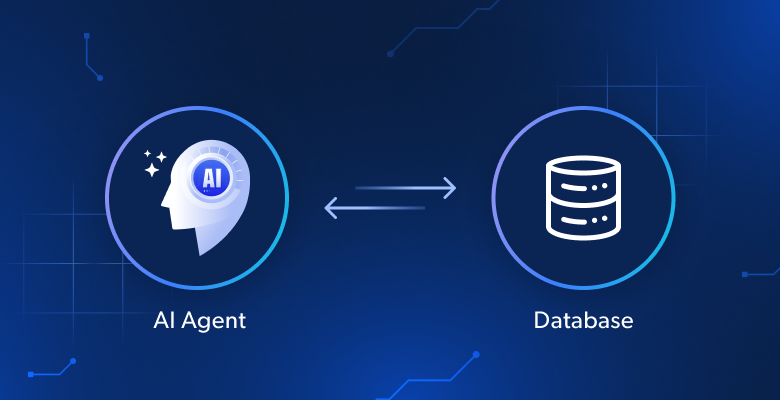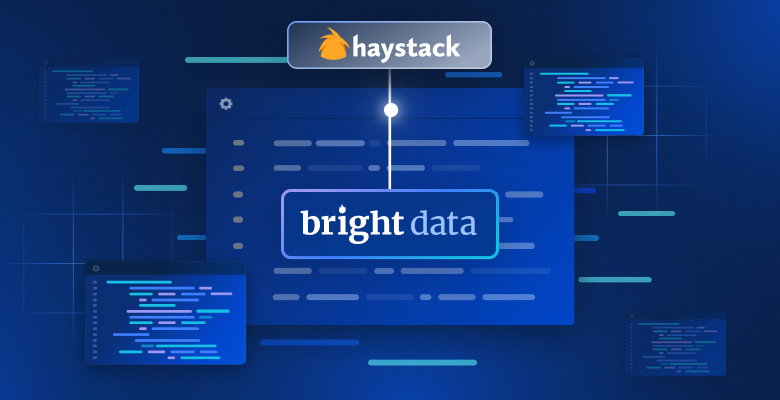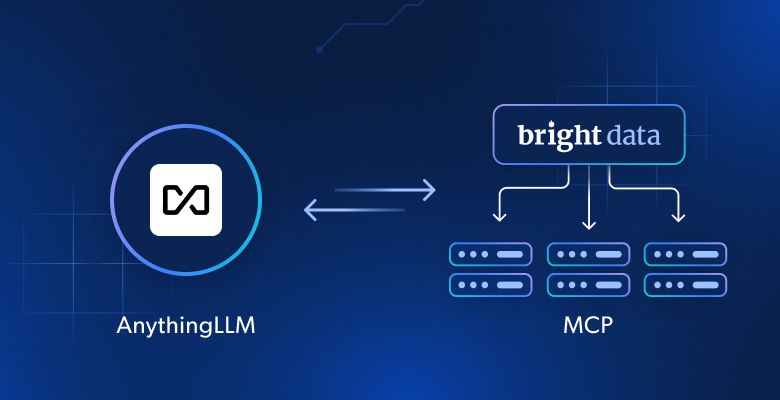In this guide, you will learn:
- What Vercel’s v0 pair programming platform is
- Why it is a powerful tool for building a SERP rank tracker
- How to use it to create a rank tracker that integrates with a SERP API service
Let’s dive in!
What Is v0?
v0 by Vercel is an AI-powered tool to generate web applications simply by describing your ideas in natural language. It acts as an AI-powered pair programmer, producing both functional code and UI based on your textual descriptions. You can then easily deploy the generated result to Vercel.
Behind the scenes, v0 creates UI components and server functions implementing the high-level goals outlined in your prompts. Also, it styles them using technologies like Tailwind CSS. Throughout the development process, it offers live previews that help you refine the generated output with additional prompts.
v0 was originally built by developers for developers to speed up prototyping and coding. Still, its capabilities extend well beyond code generation and is now a valuable tool for professionals across a wide range of industries.
Why v0 Is a Great Choice for Building an SERP Rank Tracker Application
A SERP rank tracker—also known as an “SEO rank tracker” or simply “rank tracker”—is a web application that monitors how websites rank for specific keywords on SERPs (search engine results pages). In simpler terms, it visually tracks the positions of some keywords on SERPs.
SEO monitoring remains a core part of most marketing strategies and campaigns, whether for small businesses or global brands. Even in today’s AI-driven world, where acronyms like SGE (Search Generative Experience) are gaining popularity, SEO is still key. Why? Because most real-time AI chatbots and tools pull fresh information from the top-ranking SERP results. Thus, achieving high rankings is more important than ever.
So, no—SEO isn’t dying. Quite the opposite, it is evolving and becoming even more relevant. In this rapidly changing environment, having a tool that helps you easily track how updates in the SEO landscape affect your site, your competitors, or any other page is fundamental.
Now, to build a minimal but functional SERP rank tracker, you need:
- A SERP data provider to fetch live keyword ranking data
- A backend engine to process, store, and manage that data
- A dashboard to visualize results, including a user-friendly keyword input system built with modern frontend technologies
In short, building such an SEO tracker requires both data integration skills and full-stack web development experience. Thanks to v0, creating a working rank tracker is now just a few prompts away!
What You Need to Get Started
v0 eliminates the need for software development skills by providing AI-powered UI generation and natural language-to-code capabilities. However, you still need access to reliable SERP data to build an SEO rank tracker.
The most effective way to retrieve this data is by using one of the many SERP Scraper API services. These solutions fetch SERP results from specific search engines, enabling you to track keyword rankings accurately. They bypass anti-bot protections, provide localized content in multiple languages, and give you access to geo-specific results worldwide.
So, while v0 helps you build the rank tracker interface, you still require a top-notch SERP scraping solution—like Bright Data’s SERP API.
SERP API scrapes results from Google, Bing, DuckDuckGo, Yandex, Baidu, and several other search engines in real time. Via a single customizable endpoint, you can get structured SERP data.
Bright Data’s SERP API solution can be integrated into any technology stack, including the code generated by v0. Let’s discover how!
Creating an SEO Rank Tracker with SERP API and v0: Step-by-Step Tutorial
In this guided section, you will see how to use v0 to create a Next.js-based rank tracker application that relies on Bright Data’s SERP API rank tracking capabilities. This application will be built entirely through prompts, so technical knowledge is not strictly required to follow along—even though it is recommended.
Let’s walk through the steps below to build a web application that allows users to track the rankings of specific keywords over time.
Prerequisites
To follow this tutorial, verify that you need to meet the following prerequisites:
- A Vercel account
- A Bright Data account
- (Optional, but helpful) Basic experience with API calls, web development, and especially familiarity with Next.js and TypeScript
If you do not yet have a Vercel or Bright Data account, do not worry. We will guide you through setting them up step by step.
Step #1: Create a New v0 Project
If you have not already, start by creating a Vercel account. Then, log into v0 using your Vercel credentials.
Next, follow the instructions in the official documentation to create and start developing a new v0 project. In detail, you can name your project something like “Rank Tracker.” At this point, you should be seeing a screen like this:

Awesome! The text area in the above image is where you will enter the prompt to generate your SERP rank tracker application. But before doing so, it is time complete the setup by configuring Bright Data’s SERP API.
Step #2: Set Up Bright Data SERP API
If you have not done it yet, start by creating a Bright Data account. Then, log in and access your user dashboard:

Next, read the official Bright Data documentation to get started with the SERP API. Alternatively, follow the visual steps below to set it up manually. Start by clicking “Get proxy products” in the “Proxies & Infrastructure scraping” card:
In the “Proxies & Scraping Infrastructure” page, look for the SERP API zone in your zones table and press it:

If you do not see the product in the table, it means that you have not configured a SERP API zone yet. In that case, scroll down and click “Get Started” on the SERP API card, then follow the instructions:

You will then land on the “SERP API” zone page below:

Here, make sure the product is enabled, and the API token is available. If you do not have a Bright Data API token yet, follow the documentation to generate one.
Note: You will be using this API token shortly when integrating SERP API calls into the AI-generated code powering your rank tracker application.
Fantastic! You are now fully set up and ready to use v0 to build a SERP rank tracker.
Step #3: Design Your Prompt
Before writing the prompt for your target application, you must get familiar with what Bright Data’s SERP API offers. After all, the engine of this application is the data provided by that API.
To learn more about it, explore the official documentation and try running some sample SERP API calls in your terminal using cURL. The SEO data returned is in JSON format and includes a wide variety of fields that can power a rich rank-tracking experience:
| Field | Description |
|---|---|
rank |
The position of the result on the search engine results page |
spelling |
Suggested spelling corrections (if any) |
rating / reviews |
Rating scores and review counts (usually for local or product results) |
extensions |
Extra metadata or links attached to a result (like site links) |
display_link |
The display URL of the search result |
organic |
Organic search results |
ads |
Paid advertisements |
people_also_ask |
Related questions shown in Google’s “People also ask” section |
videos |
Video results pulled from platforms like YouTube |
twitter |
Embedded tweets or Twitter profiles shown in results |
top_stories |
News articles featured in Google’s “Top Stories” section |
knowledge |
Knowledge panel data (e.g., entity info, Wikipedia snippets) |
recipes |
Recipe cards included in result snippets |
snack_pack_map / snack_pack |
Local business listings and map previews |
related |
Related search queries |
flights |
Flight search result blocks |
hotels |
Hotel listings or booking widgets |
Check out the docs, to see what a SERP API JSON response looks like.
As you can see, this data is more than sufficient to build a feature-rich SERP rank tracking dashboard. For this tutorial, we will focus on these basic features:
- The ability to manage tracked keywords.
- A refresh button to manually update rankings.
- A search feature to query rankings for any keyword provided by the user.
To achieve the goal, you can describe your desired application to v0 with a prompt like the following one:
I want to build an automatic rank tracking dashboard that updates daily to monitor keyword ranking changes over time. The ranking data will come from the Bright Data SERP API, using keywords provided as input parameters to the API.
The dashboard should display the following information for each keyword:
- Keyword
- Current position
- URL ranking for that keyword
- Search volume
- Country
- Position change (daily and weekly)
Required functionality:
1. Ability to manage tracked keywords (add or remove them).
2. A refresh button to manually update current rankings on demand.
3. A search feature that uses the Bright Data API to fetch rankings for specific keywords and update the currently displayed data.Paste this prompt into v0, and you will see the AI begin generating your SEO rank tracking application:

The code generation process might take a few moments, so be patient!
If you encounter any runtime errors, just click the “Fix with v0” button and let the AI handle it for you. The final result should look something like this:

Wow! It is hard to believe that the application is the result of a single prompt.
Keep in mind that the AI-generated output may differ slightly from the example shown above. That is completely expected. Regardless of the variation, the result provides an excellent starting point for building a more advanced rank tracker!
Step #4: Fix and Improve the Generated Rank Tracker Application
Now that your rank tracker has been generated, you may notice aspects you would like to tweak or enhance. Thanks to v0, you do not need to write any code. Just describe the changes you want using a new prompt.
For example, let’s say you want to brand your AI-generated application by adding your company logo. Specifically, you want the logo to appear in the top-left corner of the header, right before the “Rank Tracker” title.
In this case, we will use the Bright Data logo. All you need to do is tell v0 what you want and provide the public URL of the logo:
In the header, right before the "Rank Tracker" title, add Bright Data's logo.
URL to Bright Data logo: https://comeet-euw-app.s3.amazonaws.com/2183/a32c8b7a5296f51e0e05b7ddccbbfb20cdb8028bThe result will be:

Notice the Bright Data logo in the top left corner. The same approach to fix other UI elements or add entirely new features.
Terrific! Your SEO rank tracker app now includes your company’s branding.
Step #5: Ensure the Integration with the SERP API Is Working
Currently, the data displayed in the application comes from a hard-coded array:

This is because the SERP API has not really been integrated into the code yet.
Inspect your code and identify where the application is supposed to call the SERP API endpoint to retrieve fresh search results:

Now, you should replace those code comments with the actual SERP API integration using the built-in fetch HTTP client. Otherwise, you can speed up the process by asking v0 to assist you with the implementation.
To do that, simply describe how the SERP API works and ask the AI to integrate it into the application.
Keep in mind that this is the cURL command to connect to the Bright Data SERP API:
curl https://api.brightdata.com/request
-H "Content-Type: application/json"
-H "Authorization: Bearer <BRIGHT_DATA_API_TOKEN>"
-d '{
"zone": "<YOUR_BRIGHT_DATA_SERP_API_ZONE>",
"url": "https://www.google.com/search?q=pizza&brd_json=1"
}'
Notes:
- <BRIGHT_DATA_API_TOKEN> refers to your Bright Data API token and should be securely loaded from your .env file.
- In this case, <YOUR_BRIGHT_DATA_SERP_API_ZONE> should be set to "serp".
- In this case, the target keyword is "pizza".
The result of this API call will be a JSON object. Inside the "body" field, you’ll find a JSON-encoded string that contains the actual rank SERP data. Here’s an example:
"
{
"general": {
"search_engine": "google",
"results_cnt": 1980000000,
"search_time": 0.57,
"language": "en",
"search_type": "text",
"page_title": "pizza - Google Search"
},
"input": {
"original_url": "https://www.google.com/search?q=pizza&brd_json=1",
"user_agent": "Mozilla/5.0 (Macintosh; Intel Mac OS X 10_12)...",
"request_id": "hl_1a1be908_i00lwqqxt1"
},
"organic": [
{
"link": "https://www.pizzahut.com/",
"display_link": "https://www.pizzahut.com",
"title": "Pizza Hut | Delivery & Carryout - No One OutPizzas The Hut!",
"rank": 1,
"global_rank": 1
},
{
"link": "https://www.dominos.com/en/",
"display_link": "https://www.dominos.com › ...",
"title": "Domino's: Pizza Delivery & Carryout, Pasta, Chicken & More",
"description": "Order pizza, pasta, sandwiches & more online for carryout or delivery from Domino's. View menu, find locations, track orders. Sign up for Domino's email ...",
"rank": 2,
"global_rank": 3
},
// ...additional results
]
}
"
Your task: Integrate the SERP API into your application so that it fetches real rank data from the Bright Data endpoint instead of using the current placeholder data.Note: The cURL snippet was copied from the Bright Data SERP API documentation in Step #2. The only difference is the brd_json=1 query parameter for JSON parsing.
The previously empty SERP API integration file now includes the actual required logic:

At this point, your project should include a .env.local file with the following content:
BRIGHT_DATA_API_TOKEN=your_api_token_here
BRIGHT_DATA_SERP_ZONE=serpReplace your_api_token_here with the Bright Data API token you obtained in Step #2.
Sure, the generated code might not be perfect right away. However, with a few iterations and small manual adjustments, you should be able to get a functional V0- and SERP API–powered SEO rank tracker.
Step #6: Test Your Rank Tracker
The quality of the results you get will depend on how many AI code-fixing iterations and manual interventions you apply to the application. In this example, after just a couple of iterations and minimal manual coding, the result is the following rank tracker:

In the scenario shown above, we attempted to track the keyword “rag serp chatbot.” Under the hood, the web application retrieved the keyword’s SERP ranking via the Bright Data SERP API and added it to the tracking system.
By default, the tracked keyword refers to the first page of Google search results. In this case, the top result is our own guide on how to build a RAG chatbot using SERP API data.
Thanks to the SERP API, you are not limited to a single result. You can retrieve all top 10 results (or more, depending on the parameter you set). As a result, the application also includes a dropdown menu to explore the other search results for that keyword.
Sure, the application might still be a little buggy or clunky. Yet, it successfully demonstrates the core goal: using v0 and the SERP API to track your desired keywords!
Step #7: Next Steps
Now, the current application generated by v0 achieves its goals. Still, there are several features and improvements you should add to make it more complete and reliable:
- Scheduled runs: Add the ability to automate runs at regular or custom intervals (e.g., daily or weekly) so keyword rankings are updated consistently without requiring manual interactions.
- Email notifications: Add functionality to send email alerts when keyword rankings change significantly, such as when a keyword enters or drops out of the top 10. This helps you take immediate action based on rank changes.
- Database integration: Right now, the data is stored in local storage, which is not reliable. If the server reloads or crashes, all the data is lost. You should store the data in a real database like PostgreSQL or MySQL. Considering that SERP API replies in JSON, you could also use a NoSQL database like MongoDB. Alternatively, you can use the Supabase integration without code via v0.
- Add images: Improve the user interface by displaying website favicons or meta preview images alongside search results. This visual context helps users quickly recognize and understand the ranking entries.
- Improve the dropdown system: The current dropdown for showing rankings per keyword is basic. You should enhance it to display all results more clearly. One idea is to create a separate page that shows all rankings for a given keyword, making it easier to analyze and track.
- Deploy to Vercel: Ship the application to Vercel to make it accessible to other users. This allows others to test it, provide feedback, and use it in real scenarios. To deploy, follow the official Vercel deployment guide.
Conclusion
In this article, you discovered how v0’s powerful AI-driven text-to-design capabilities can help you build a SERP rank tracker in minutes. That would not be possible without a reliable and easy-to-integrate source of SERP data like Bright Data’s SERP API.
What we built here is just one example of what is possible when you combine scraped data with a cool AI-generated dashboard. As you can imagine, this same approach can be applied to many other use cases. All you need are the right tools to get the data that fits your specific needs.
So, why stop here? Consider exploring Web Scraper APIs—dedicated endpoints for extracting fresh, structured, and fully compliant web data from over 120 popular websites.
Sign up for a free Bright Data account today and start building with AI-ready scraping solutions!





